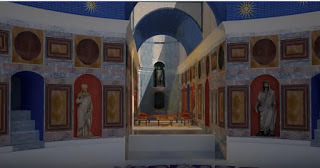MaryAnn Bernal's Blog, page 138
November 6, 2015
History Trivia - Treaty of Wallingford signed
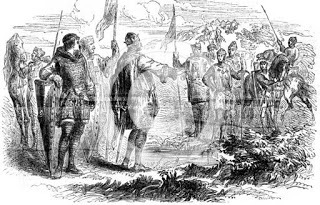 November 6, 1153 - Treaty of Wallingford was signed. This agreement effectively ended the civil war known as the Anarchy, caused by a dispute between Empress Matilda and her cousin, King Stephen of England, over the English crown. The Treaty of Wallingford forced Stephen to recognize Matilda's son, Henry of Anjou, who became Henry II, as his heir, while Stephen kept the throne until he died.
November 6, 1153 - Treaty of Wallingford was signed. This agreement effectively ended the civil war known as the Anarchy, caused by a dispute between Empress Matilda and her cousin, King Stephen of England, over the English crown. The Treaty of Wallingford forced Stephen to recognize Matilda's son, Henry of Anjou, who became Henry II, as his heir, while Stephen kept the throne until he died.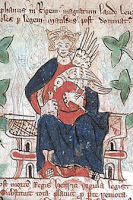
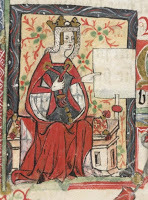
Published on November 06, 2015 02:00
November 5, 2015
The Digital Hadrian's Villa Project: State vs. Reconstruction
Published on November 05, 2015 03:00
History Trivia - Guy Fawkes Day
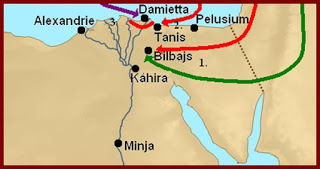 November 5, 1219 - The port of Damietta (Egypt) fell to the Crusaders after a siege.
November 5, 1219 - The port of Damietta (Egypt) fell to the Crusaders after a siege.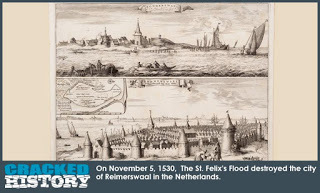 1530 St. Felix Flood ravaged the Dutch coast, destroying the city of Reimerswaal in the Netherlands.
1530 St. Felix Flood ravaged the Dutch coast, destroying the city of Reimerswaal in the Netherlands.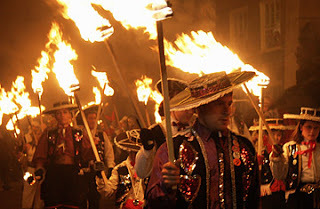 1605 - Guy Fawkes Day, the Catholic convert conspired to blow up Parliament and the British royal family. The gunpowder plot was discovered and Fawkes was arrested before the event was to take place. Guy Fawkes Night, also known as Bonfire Night, is an annual celebration, primarily in Great Britain, traditionally and usually held on the evening of 5 November. Festivities are centered on the use of fireworks and the lighting of bonfires. it is also celebrated in former British Colonies such as Australia and New Zealand.
1605 - Guy Fawkes Day, the Catholic convert conspired to blow up Parliament and the British royal family. The gunpowder plot was discovered and Fawkes was arrested before the event was to take place. Guy Fawkes Night, also known as Bonfire Night, is an annual celebration, primarily in Great Britain, traditionally and usually held on the evening of 5 November. Festivities are centered on the use of fireworks and the lighting of bonfires. it is also celebrated in former British Colonies such as Australia and New Zealand.
Published on November 05, 2015 01:00
November 4, 2015
10 things you didn’t know about the history (and mystery) of Halloween
History Extra
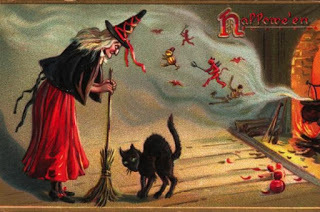 1) Most people believe 31 October is an ancient pagan festival associated with the supernatural. In fact, it has religious connotations – although there is disagreement among historians about when it begun. Some say Hallowtide was introduced as All Saints’ Day in the 7th century AD by Pope Boniface IV, while others maintain it was created in the 9th century AD by Christians to commemorate their martyrs and saints.
1) Most people believe 31 October is an ancient pagan festival associated with the supernatural. In fact, it has religious connotations – although there is disagreement among historians about when it begun. Some say Hallowtide was introduced as All Saints’ Day in the 7th century AD by Pope Boniface IV, while others maintain it was created in the 9th century AD by Christians to commemorate their martyrs and saints.
In medieval Britain, ‘Halloween’ was the eve of the Catholic festival All Saints or All-Hallows (from Old English ‘Holy Man’) on 1 November, and was followed by the feast of All Souls on 2 November.
2) The tradition of carving a face on a turnip or swede (and more recently pumpkin), and using these as lanterns seems to be a relatively modern tradition. On the last Thursday in October, children in the Somerset village of Hinton St George carry lanterns made of mangel-wurzles (a type of root vegetable). The light shines through a design etched on the skin. They are carried around the streets as the children chant: “It’s Punky Night tonight, It’s Punky Night tonight, Give us a candle, give us a light, It’s Punky Night tonight.”
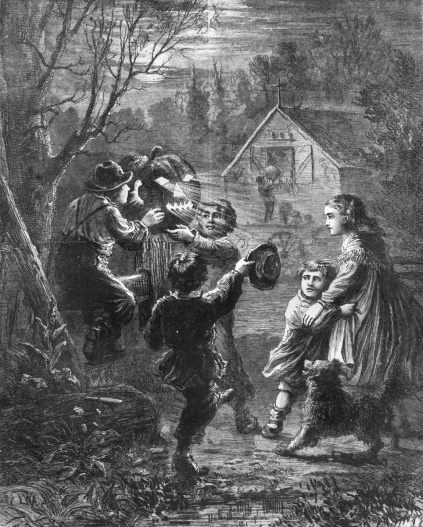
3) Much of the modern supernatural lore surrounding Halloween was invented as recently as the 19th century. Scots and Irish settlers brought the custom of Mischief Night visiting to North America, where it became known as ‘Trick or Treat’. Until the revival of interest in Halloween during the 1970s, this American tradition was largely unknown in England. The importation of ‘Trick or Treat’ into parts of England during the 1980s was helped by scenes in American TV programmes and the 1982 film E.T.
4) There is no evidence the pagan Anglo-Saxons celebrated a festival on 1 November, but the Venerable Bede says the month was known as ‘Blod-monath’ (blood month), when surplus livestock were slaughtered and offered as sacrifices. The truth is there is no written evidence that 31 October was linked to the supernatural in England before the 19th century.
5) In pre-Christian Ireland, 1 November was known as ‘Samhain’ (summer's end). This date marked the onset of winter in Gaelic-speaking areas of Britain. It was also the end of the pastoral farming year, when cattle were slaughtered and tribal gatherings such as the Irish Feis of Tara were held. In the 19th century the anthropologist Sir James Frazer popularised the idea of Samhain as an ancient Celtic festival of the dead, when pagan religious ceremonies were held.
6) The Catholic tradition of offering prayers to the dead, the ringing of church bells and lighting of candles and torches on 1 November provides the link with the spirit world. In medieval times, prayers were said for souls trapped in purgatory on 1 November. This was believed to be a sort of ‘halfway house’ on the road to Heaven, and it was thought their ghosts could return to earth to ask relatives for assistance in the journey.
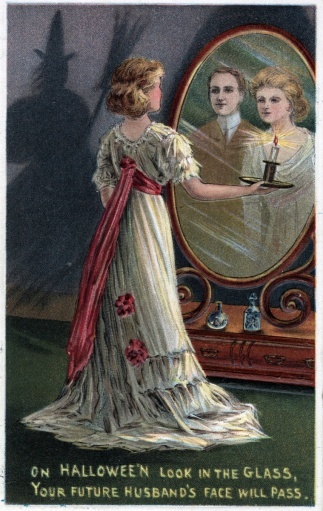
7) Popular Halloween customs in England included ‘souling’, where groups of adults – and later children wearing costumes – visited big houses to sing and collect money and food. Souling was common in parts of Cheshire, Shropshire, Lancashire and Yorkshire on 1 and 2 November. In parts of northern England, special cakes were baked and left in churchyards as offerings to the dead.
8) Until the 19th century, bonfires were lit on Halloween in parts of northern England and Derbyshire. Some folklorists believe the enduring popularity of Guy Fawkes bonfires on 5 November may be a memory of an older fire festival, but there is a lack of written evidence for these in England before the late 17th century.
9) Love divinations on Halloween spread to England from Scotland as a result of the popularity of Robert Burn’s poem Halloween in Victorian times. One love divination mentioned by Burns includes placing hazelnuts in the fire, naming one for yourself and the other for your partner. If they burned gently and then went out, this indicated a long and harmonious life together; if they coughed and spluttered or exploded, this was a sign of problems ahead.
Apples were also used for divination purposes: the skin was thrown over the shoulder, or the fruit floated in water or hung upon strings, to be seized by the teeth of the players.

10) The idea of Halloween as a festival of supernatural evil forces is an entirely modern invention. Urban legends about razor blades in apples and cyanide in sweets, hauntings by restless spirits and the use of 31 October as the date of evil or inauspicious events in horror films, reflect modern fears and terrors.
Every year Halloween provokes controversy and divides opinions: most people see it as just as a bit of harmless fun, but modern witches say it marks an ancient pagan festival, while some evangelical Christians claim it is a celebration of dangerous occult forces. This explains why folklorist Steve Roud calls it “the most widely misunderstood and misrepresented day in the festival year”.
Dr David Clarke is a senior lecturer in journalism at Sheffield Hallam University. He holds a PhD in English cultural tradition and folklore, and a degree in archaeology, prehistory and medieval history.
 1) Most people believe 31 October is an ancient pagan festival associated with the supernatural. In fact, it has religious connotations – although there is disagreement among historians about when it begun. Some say Hallowtide was introduced as All Saints’ Day in the 7th century AD by Pope Boniface IV, while others maintain it was created in the 9th century AD by Christians to commemorate their martyrs and saints.
1) Most people believe 31 October is an ancient pagan festival associated with the supernatural. In fact, it has religious connotations – although there is disagreement among historians about when it begun. Some say Hallowtide was introduced as All Saints’ Day in the 7th century AD by Pope Boniface IV, while others maintain it was created in the 9th century AD by Christians to commemorate their martyrs and saints.In medieval Britain, ‘Halloween’ was the eve of the Catholic festival All Saints or All-Hallows (from Old English ‘Holy Man’) on 1 November, and was followed by the feast of All Souls on 2 November.
2) The tradition of carving a face on a turnip or swede (and more recently pumpkin), and using these as lanterns seems to be a relatively modern tradition. On the last Thursday in October, children in the Somerset village of Hinton St George carry lanterns made of mangel-wurzles (a type of root vegetable). The light shines through a design etched on the skin. They are carried around the streets as the children chant: “It’s Punky Night tonight, It’s Punky Night tonight, Give us a candle, give us a light, It’s Punky Night tonight.”

3) Much of the modern supernatural lore surrounding Halloween was invented as recently as the 19th century. Scots and Irish settlers brought the custom of Mischief Night visiting to North America, where it became known as ‘Trick or Treat’. Until the revival of interest in Halloween during the 1970s, this American tradition was largely unknown in England. The importation of ‘Trick or Treat’ into parts of England during the 1980s was helped by scenes in American TV programmes and the 1982 film E.T.
4) There is no evidence the pagan Anglo-Saxons celebrated a festival on 1 November, but the Venerable Bede says the month was known as ‘Blod-monath’ (blood month), when surplus livestock were slaughtered and offered as sacrifices. The truth is there is no written evidence that 31 October was linked to the supernatural in England before the 19th century.
5) In pre-Christian Ireland, 1 November was known as ‘Samhain’ (summer's end). This date marked the onset of winter in Gaelic-speaking areas of Britain. It was also the end of the pastoral farming year, when cattle were slaughtered and tribal gatherings such as the Irish Feis of Tara were held. In the 19th century the anthropologist Sir James Frazer popularised the idea of Samhain as an ancient Celtic festival of the dead, when pagan religious ceremonies were held.
6) The Catholic tradition of offering prayers to the dead, the ringing of church bells and lighting of candles and torches on 1 November provides the link with the spirit world. In medieval times, prayers were said for souls trapped in purgatory on 1 November. This was believed to be a sort of ‘halfway house’ on the road to Heaven, and it was thought their ghosts could return to earth to ask relatives for assistance in the journey.

7) Popular Halloween customs in England included ‘souling’, where groups of adults – and later children wearing costumes – visited big houses to sing and collect money and food. Souling was common in parts of Cheshire, Shropshire, Lancashire and Yorkshire on 1 and 2 November. In parts of northern England, special cakes were baked and left in churchyards as offerings to the dead.
8) Until the 19th century, bonfires were lit on Halloween in parts of northern England and Derbyshire. Some folklorists believe the enduring popularity of Guy Fawkes bonfires on 5 November may be a memory of an older fire festival, but there is a lack of written evidence for these in England before the late 17th century.
9) Love divinations on Halloween spread to England from Scotland as a result of the popularity of Robert Burn’s poem Halloween in Victorian times. One love divination mentioned by Burns includes placing hazelnuts in the fire, naming one for yourself and the other for your partner. If they burned gently and then went out, this indicated a long and harmonious life together; if they coughed and spluttered or exploded, this was a sign of problems ahead.
Apples were also used for divination purposes: the skin was thrown over the shoulder, or the fruit floated in water or hung upon strings, to be seized by the teeth of the players.

10) The idea of Halloween as a festival of supernatural evil forces is an entirely modern invention. Urban legends about razor blades in apples and cyanide in sweets, hauntings by restless spirits and the use of 31 October as the date of evil or inauspicious events in horror films, reflect modern fears and terrors.
Every year Halloween provokes controversy and divides opinions: most people see it as just as a bit of harmless fun, but modern witches say it marks an ancient pagan festival, while some evangelical Christians claim it is a celebration of dangerous occult forces. This explains why folklorist Steve Roud calls it “the most widely misunderstood and misrepresented day in the festival year”.
Dr David Clarke is a senior lecturer in journalism at Sheffield Hallam University. He holds a PhD in English cultural tradition and folklore, and a degree in archaeology, prehistory and medieval history.
Published on November 04, 2015 03:00
History Trivia - English Cardinal Thomas Wolsey arrested
 November 4, 1333 The River Arno flooding caused massive damage in Florence as recorded by the Florentine chronicler Giovanni Villani.
November 4, 1333 The River Arno flooding caused massive damage in Florence as recorded by the Florentine chronicler Giovanni Villani. 1520 - Christian II crowned King of Sweden. Already king of Denmark and Norway, Christian conquered Sweden as well. But the subsequent massacre of his opponents led to a Swedish war of liberation, which was achieved a mere three years later.
1520 - Christian II crowned King of Sweden. Already king of Denmark and Norway, Christian conquered Sweden as well. But the subsequent massacre of his opponents led to a Swedish war of liberation, which was achieved a mere three years later.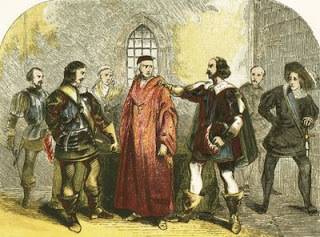 1529 English Cardinal Thomas Wolsey was arrested. Wolsey's failure to secure the annulment for Henry VIII from Catherine of Aragon is widely perceived to have directly caused his downfall and arrest.
1529 English Cardinal Thomas Wolsey was arrested. Wolsey's failure to secure the annulment for Henry VIII from Catherine of Aragon is widely perceived to have directly caused his downfall and arrest.
Published on November 04, 2015 02:30
November 3, 2015
5 facts about the Colosseum
History Extra
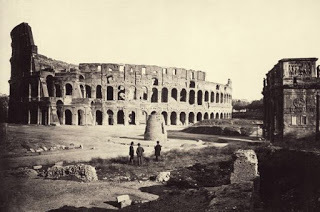 The Flavian Amphitheatre in Rome, better known as the Colosseum, c1865. (Photo by Sean Sexton/Getty Images)
The Flavian Amphitheatre in Rome, better known as the Colosseum, c1865. (Photo by Sean Sexton/Getty Images)
The Flavian Amphitheatre, better known as the Colosseum, is both a marvel of architecture and engineering, as well as a powerful symbol of Ancient Rome’s might and brutality.
Here are 5 facts about the Colosseum, a place of spectacle and slaughter.…
1) It was the largest amphitheatre ever built, taking ten years to construct and able to hold 50,000 spectators at its peak. From its dedication in AD 80 until the fall of the Empire, the rich and poor, noble and plebian flocked to the Colosseum to watch gladiatorial games, executions and animal hunts.
2) The seating reflected the hierarchy of Roman society – the lower a person’s tier, the higher their position. So Senators sat in the bottom level, closest to the action, while women, the poorest men and slaves could only sit on the top level. Not everyone was welcome in the Colosseum. Actors, the grave diggers and former gladiators couldn’t attend.
3) It is thought 1 million animals died fighting either men or other creatures. Elephants, lions, bears, crocodiles, giraffes, rhinos and hippos were brought from around the known world. There are also records from the early years of the Colosseum claiming that the arena was flooded with water so that historic naval battles could be reconstructed.
4) Much like modern stadiums, spectators were given tickets (made of pottery), which led them to a specific gate and staircase so they could find their level. The 76 public entrances were numbered I to LXXVI. The many passageways into the arena were called vomitoria (after the Latin word for ‘spew forth’). There were so many that, even when filled, the Colosseum could empty in minutes.
5) Following the downfall of the Roman Empire, the Colosseum fell into disrepair as lightning and earthquakes caused severe damage, including the collapse of one side of the outer wall. Yet, greater damage was done by those stealing the rocks and marble to use on other construction sites. For centuries, the Colosseum became a quarry. Today, we can only get a hint of the majesty and awe-inspiring size of the original Colosseum.
 The Flavian Amphitheatre in Rome, better known as the Colosseum, c1865. (Photo by Sean Sexton/Getty Images)
The Flavian Amphitheatre in Rome, better known as the Colosseum, c1865. (Photo by Sean Sexton/Getty Images) The Flavian Amphitheatre, better known as the Colosseum, is both a marvel of architecture and engineering, as well as a powerful symbol of Ancient Rome’s might and brutality.
Here are 5 facts about the Colosseum, a place of spectacle and slaughter.…
1) It was the largest amphitheatre ever built, taking ten years to construct and able to hold 50,000 spectators at its peak. From its dedication in AD 80 until the fall of the Empire, the rich and poor, noble and plebian flocked to the Colosseum to watch gladiatorial games, executions and animal hunts.
2) The seating reflected the hierarchy of Roman society – the lower a person’s tier, the higher their position. So Senators sat in the bottom level, closest to the action, while women, the poorest men and slaves could only sit on the top level. Not everyone was welcome in the Colosseum. Actors, the grave diggers and former gladiators couldn’t attend.
3) It is thought 1 million animals died fighting either men or other creatures. Elephants, lions, bears, crocodiles, giraffes, rhinos and hippos were brought from around the known world. There are also records from the early years of the Colosseum claiming that the arena was flooded with water so that historic naval battles could be reconstructed.
4) Much like modern stadiums, spectators were given tickets (made of pottery), which led them to a specific gate and staircase so they could find their level. The 76 public entrances were numbered I to LXXVI. The many passageways into the arena were called vomitoria (after the Latin word for ‘spew forth’). There were so many that, even when filled, the Colosseum could empty in minutes.
5) Following the downfall of the Roman Empire, the Colosseum fell into disrepair as lightning and earthquakes caused severe damage, including the collapse of one side of the outer wall. Yet, greater damage was done by those stealing the rocks and marble to use on other construction sites. For centuries, the Colosseum became a quarry. Today, we can only get a hint of the majesty and awe-inspiring size of the original Colosseum.
Published on November 03, 2015 03:00
History Trivia - Henry VIII Head of the Church of England
 November 3, 1507 Leonardo da Vinci was commissioned to paint the Mona Lisa.
November 3, 1507 Leonardo da Vinci was commissioned to paint the Mona Lisa.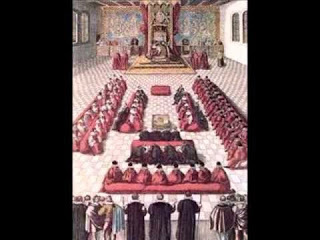 1529 London - first sitting of the Reformation Parliament.
1529 London - first sitting of the Reformation Parliament.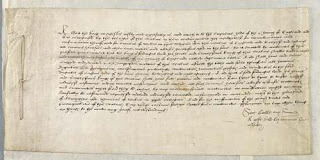 1534 English Parliament accepts the Act of Supremacy:Henry VIII is head of the Church of England.
1534 English Parliament accepts the Act of Supremacy:Henry VIII is head of the Church of England.
Published on November 03, 2015 02:00
November 2, 2015
All Souls Day
November 2
The origins of All Souls' Day (Day of the Dead) in European folklore and folk belief are related to customs of ancestor veneration practiced worldwide, such as the Chinese Ghost Festival or the Latin American Day of the Dead. The Roman custom was that of the Lemuria.
The theological basis for the feast is the doctrine that the souls which, on departing from the body, are not perfectly cleansed from venial sins, or have not fully atoned for past transgressions, are debarred from the Beatific Vision, and that the faithful on earth can help them by prayers, alms deeds and especially by the sacrifice of the Mass.
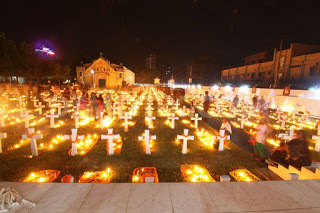
Published on November 02, 2015 03:30
The Missing Link to Stonehenge: Stone Age Eco-Home Discovered near Famous Monument
Ancient Origin
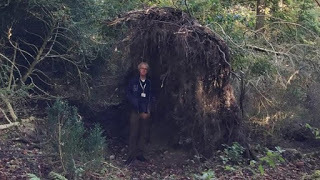
In what archaeologists are calling the missing link to Stonehenge, the world’s first “eco” home, and the oldest settlement yet found in the prehistoric monument landscape has been discovered. Built from the roots of a fallen tree, the “environmentally sensitive” dwelling is shaking up previously held notions about Mesolithic people, challenging the idea that they were nomadic, and effectively rewriting British history.
David Jacques, archaeology project director at the University of Buckingham said the find is “tremendously important.” Jacques has been leading excavations and research at the Blick Mead (also called Vespasian's Camp) site at Amesbury, Wiltshire, since 2005.
The discovery places these early people in the “important prehistoric landscape at the dawn of the Neolithic period, when Mesolithic people were thought to have been wiped out, and raises the question of whether they were the forefathers of those who built Stonehenge,” reports Belfast Telegraph.
 The iconic Stonehenge at Whiltshire, UK. (
CC BY-SA 2.0
)The Prehistoric Environmental “Eco House”: Back to their RootsResearchers unearthed the remains of the dwelling which was built out of the root system of a fallen tree. The living area was built into a nine foot (2.7 meter) wide hollow in the tree.
The iconic Stonehenge at Whiltshire, UK. (
CC BY-SA 2.0
)The Prehistoric Environmental “Eco House”: Back to their RootsResearchers unearthed the remains of the dwelling which was built out of the root system of a fallen tree. The living area was built into a nine foot (2.7 meter) wide hollow in the tree.
The house is said to have been “environmentally sensitive”, making use of the natural features of the location, and appears to be like nothing else found at Stonehenge so far.
 Roots of a fallen tree served as a wall to the hollowed-out dwelling. Credit: University of Buckingham/PAThe press release describes the home:
Roots of a fallen tree served as a wall to the hollowed-out dwelling. Credit: University of Buckingham/PAThe press release describes the home:
The hunter-gatherers showed a level of sophistication not before seen with their home.
Major Discovery: 4,500-year-old megalithic super-henge found buried one mile from Stonehenge Feeding Stonehenge: Hearty Menu for Monument Builders Revealed - Barbeque Pork, Roast Beef, Yogurt and Cheeses Archaeologists Search for Neolithic Home of Avebury Stone Circle Builders Between the Monuments The dwelling, radiocarbon dated to between 4336 and 4246 BC through tests on a wooden post, was found at Blick Mead in Wiltshire, UK, just over a mile (1.6 kilometers) from the location of the famous Neolithic monument Stonehenge, and only 50 feet (15 meters) away from the busy A303 roadway in Wiltshire.
Development Danger and Rescue ArchaeologyThis crucial discovery may be under threat if plans for a tunnel for the A303 road go ahead.
The controversial government-backed tunnel would be 1.8 miles (2.9 kilometers) long, and run within 65 feet (20 meters) of the dwelling. Archaeologists fear this may not only damage the discovered site, but obliterate other buried secrets of the ancient people who lived in the area.
In a bid to prevent the loss of history, Jacques is advocating that the road be rerouted and the entire Stonehenge area be made into a national park.
The government proposed the tunnel in 2014 to deal with congestion on the A303, and to direct the roadway away from Stonehenge—a move said to keep traffic pollution away from the ancient site, but also so as to block the view from the passing public.
 A303 passing close to Stonehenge. (
CC BY-SA 2.0
)Officials from UNESCO and the International Council on Monuments and sites visited the Eco House site in Blick Mead this week. There are many historical and preservation groups which support the tunnel development. The Guardian reports that Historic England, the National Trust and English Heritage released a joint statement that they await further information on the tunnel plans and are confident the importance of the Eco House will be taken into consideration.
A303 passing close to Stonehenge. (
CC BY-SA 2.0
)Officials from UNESCO and the International Council on Monuments and sites visited the Eco House site in Blick Mead this week. There are many historical and preservation groups which support the tunnel development. The Guardian reports that Historic England, the National Trust and English Heritage released a joint statement that they await further information on the tunnel plans and are confident the importance of the Eco House will be taken into consideration.
So-called “rescue archaeology” will be done on endangered sites and in the trenches of tunnel construction in a race to remove and archive as many artifacts as possible.
 Photo showing a carriage and cart path passed close by to Stonehenge in 1885. (
Public Domain
)Blick Mead, Unique Prehistoric HillfortAccording to the University of Buckingham, Blick Mead was built on a hill not far from the eventual site of Stonehenge. The hillfort was first built up during the late Bronze age (1100 BC – 800 BC), and is unique in that it has an unusual shape, looking like an arrowhead when seen from above.
Photo showing a carriage and cart path passed close by to Stonehenge in 1885. (
Public Domain
)Blick Mead, Unique Prehistoric HillfortAccording to the University of Buckingham, Blick Mead was built on a hill not far from the eventual site of Stonehenge. The hillfort was first built up during the late Bronze age (1100 BC – 800 BC), and is unique in that it has an unusual shape, looking like an arrowhead when seen from above.
It was later dubbed “Vespasian's Camp” in the incorrect belief it was an ancient Roman settlement.
 Amesbury, Wiltshire North bank of Blick Mead (Vespasian's Camp). (
Public Domain)
4,400-year-old ruins found near ceremonial site may be the oldest house ever found in Britain
Body of 4,000-year-old teenager near Stonehenge may give clues about Bronze Age lives
Archaeologists reveal astounding Bronze Age microscopic gold work from around Stonehenge
A trove of artifacts have been unearthed at the site: approximately 12,000 pieces of worked flint, and 500 fragments of bone dating to 8,000 years ago have been found. Many of the tools have retained their razor-like sharpness, so much so that excavators received sliced fingers from handling them. Teeth of giant Aurochs, the prehistoric ancestors of cattle, have also been recovered at the site.
Amesbury, Wiltshire North bank of Blick Mead (Vespasian's Camp). (
Public Domain)
4,400-year-old ruins found near ceremonial site may be the oldest house ever found in Britain
Body of 4,000-year-old teenager near Stonehenge may give clues about Bronze Age lives
Archaeologists reveal astounding Bronze Age microscopic gold work from around Stonehenge
A trove of artifacts have been unearthed at the site: approximately 12,000 pieces of worked flint, and 500 fragments of bone dating to 8,000 years ago have been found. Many of the tools have retained their razor-like sharpness, so much so that excavators received sliced fingers from handling them. Teeth of giant Aurochs, the prehistoric ancestors of cattle, have also been recovered at the site.
A scene of continuous use for nearly 3,000 years, it’s believed Blick Mead may have been a place for the butchering of aurochs and a site of huge ritual feasts, as well as a tool making center.
According to Belfast Telegraph, Jacques is pressing for preservation of the crucial site, saying: “We already know it's the longest used Mesolithic site in the whole of Europe and that the earliest monuments at Stonehenge were Mesolithic.
Featured Image: Archaeologist David Jacques demonstrates how a tree root system could function as a wall for Stone Age people. Credit: University of Buckingham
By: Liz Leafloor

In what archaeologists are calling the missing link to Stonehenge, the world’s first “eco” home, and the oldest settlement yet found in the prehistoric monument landscape has been discovered. Built from the roots of a fallen tree, the “environmentally sensitive” dwelling is shaking up previously held notions about Mesolithic people, challenging the idea that they were nomadic, and effectively rewriting British history.
David Jacques, archaeology project director at the University of Buckingham said the find is “tremendously important.” Jacques has been leading excavations and research at the Blick Mead (also called Vespasian's Camp) site at Amesbury, Wiltshire, since 2005.
The discovery places these early people in the “important prehistoric landscape at the dawn of the Neolithic period, when Mesolithic people were thought to have been wiped out, and raises the question of whether they were the forefathers of those who built Stonehenge,” reports Belfast Telegraph.
"This is a key site for where Britain began,” said Jacques in a University of Buckingham press release.
 The iconic Stonehenge at Whiltshire, UK. (
CC BY-SA 2.0
)The Prehistoric Environmental “Eco House”: Back to their RootsResearchers unearthed the remains of the dwelling which was built out of the root system of a fallen tree. The living area was built into a nine foot (2.7 meter) wide hollow in the tree.
The iconic Stonehenge at Whiltshire, UK. (
CC BY-SA 2.0
)The Prehistoric Environmental “Eco House”: Back to their RootsResearchers unearthed the remains of the dwelling which was built out of the root system of a fallen tree. The living area was built into a nine foot (2.7 meter) wide hollow in the tree.The house is said to have been “environmentally sensitive”, making use of the natural features of the location, and appears to be like nothing else found at Stonehenge so far.
 Roots of a fallen tree served as a wall to the hollowed-out dwelling. Credit: University of Buckingham/PAThe press release describes the home:
Roots of a fallen tree served as a wall to the hollowed-out dwelling. Credit: University of Buckingham/PAThe press release describes the home:“Our green ancestors used the giant base – around 9 meters – of a large tree which had fallen to make into the wall of their house. The earthy wooden wall had been lined with flints and the huge, roughly 3 meter pit left by the tree being unearthed had been lined with cobbles by the resourceful people, using stones flung up by the roots of the tree, when it was felled. It then appears to have been roofed with animal skin and had a stone hearth close by. Other indications that our precursors were eco-friendly long before we ever imagined are the presence of a number of large stones placed near the building’s wall which may have been primitive ‘storage heaters’ – warmed by a fire and placed close to where people slept instead of keeping a fire burning all night.”Stones had also been brought in from far-flung locations and placed around the dwelling as decoration or mementos.
The hunter-gatherers showed a level of sophistication not before seen with their home.
“Rather than seeing these people as making do with anything nature happens to throw up, a better way is that, environmentally, they are amazingly well attuned and have a skillful and sophisticated understanding of the landscape. They are adapting themselves around it,” Jacques said, according to The Guardian.The site has the potential to spur a shift in thinking. “It is suggesting that Stonehenge has got a back story and we have found a missing link to it,” said Jacques.
Major Discovery: 4,500-year-old megalithic super-henge found buried one mile from Stonehenge Feeding Stonehenge: Hearty Menu for Monument Builders Revealed - Barbeque Pork, Roast Beef, Yogurt and Cheeses Archaeologists Search for Neolithic Home of Avebury Stone Circle Builders Between the Monuments The dwelling, radiocarbon dated to between 4336 and 4246 BC through tests on a wooden post, was found at Blick Mead in Wiltshire, UK, just over a mile (1.6 kilometers) from the location of the famous Neolithic monument Stonehenge, and only 50 feet (15 meters) away from the busy A303 roadway in Wiltshire.
Development Danger and Rescue ArchaeologyThis crucial discovery may be under threat if plans for a tunnel for the A303 road go ahead.
The controversial government-backed tunnel would be 1.8 miles (2.9 kilometers) long, and run within 65 feet (20 meters) of the dwelling. Archaeologists fear this may not only damage the discovered site, but obliterate other buried secrets of the ancient people who lived in the area.
In a bid to prevent the loss of history, Jacques is advocating that the road be rerouted and the entire Stonehenge area be made into a national park.
The government proposed the tunnel in 2014 to deal with congestion on the A303, and to direct the roadway away from Stonehenge—a move said to keep traffic pollution away from the ancient site, but also so as to block the view from the passing public.
 A303 passing close to Stonehenge. (
CC BY-SA 2.0
)Officials from UNESCO and the International Council on Monuments and sites visited the Eco House site in Blick Mead this week. There are many historical and preservation groups which support the tunnel development. The Guardian reports that Historic England, the National Trust and English Heritage released a joint statement that they await further information on the tunnel plans and are confident the importance of the Eco House will be taken into consideration.
A303 passing close to Stonehenge. (
CC BY-SA 2.0
)Officials from UNESCO and the International Council on Monuments and sites visited the Eco House site in Blick Mead this week. There are many historical and preservation groups which support the tunnel development. The Guardian reports that Historic England, the National Trust and English Heritage released a joint statement that they await further information on the tunnel plans and are confident the importance of the Eco House will be taken into consideration.So-called “rescue archaeology” will be done on endangered sites and in the trenches of tunnel construction in a race to remove and archive as many artifacts as possible.
 Photo showing a carriage and cart path passed close by to Stonehenge in 1885. (
Public Domain
)Blick Mead, Unique Prehistoric HillfortAccording to the University of Buckingham, Blick Mead was built on a hill not far from the eventual site of Stonehenge. The hillfort was first built up during the late Bronze age (1100 BC – 800 BC), and is unique in that it has an unusual shape, looking like an arrowhead when seen from above.
Photo showing a carriage and cart path passed close by to Stonehenge in 1885. (
Public Domain
)Blick Mead, Unique Prehistoric HillfortAccording to the University of Buckingham, Blick Mead was built on a hill not far from the eventual site of Stonehenge. The hillfort was first built up during the late Bronze age (1100 BC – 800 BC), and is unique in that it has an unusual shape, looking like an arrowhead when seen from above.It was later dubbed “Vespasian's Camp” in the incorrect belief it was an ancient Roman settlement.
 Amesbury, Wiltshire North bank of Blick Mead (Vespasian's Camp). (
Public Domain)
4,400-year-old ruins found near ceremonial site may be the oldest house ever found in Britain
Body of 4,000-year-old teenager near Stonehenge may give clues about Bronze Age lives
Archaeologists reveal astounding Bronze Age microscopic gold work from around Stonehenge
A trove of artifacts have been unearthed at the site: approximately 12,000 pieces of worked flint, and 500 fragments of bone dating to 8,000 years ago have been found. Many of the tools have retained their razor-like sharpness, so much so that excavators received sliced fingers from handling them. Teeth of giant Aurochs, the prehistoric ancestors of cattle, have also been recovered at the site.
Amesbury, Wiltshire North bank of Blick Mead (Vespasian's Camp). (
Public Domain)
4,400-year-old ruins found near ceremonial site may be the oldest house ever found in Britain
Body of 4,000-year-old teenager near Stonehenge may give clues about Bronze Age lives
Archaeologists reveal astounding Bronze Age microscopic gold work from around Stonehenge
A trove of artifacts have been unearthed at the site: approximately 12,000 pieces of worked flint, and 500 fragments of bone dating to 8,000 years ago have been found. Many of the tools have retained their razor-like sharpness, so much so that excavators received sliced fingers from handling them. Teeth of giant Aurochs, the prehistoric ancestors of cattle, have also been recovered at the site.A scene of continuous use for nearly 3,000 years, it’s believed Blick Mead may have been a place for the butchering of aurochs and a site of huge ritual feasts, as well as a tool making center.
According to Belfast Telegraph, Jacques is pressing for preservation of the crucial site, saying: “We already know it's the longest used Mesolithic site in the whole of Europe and that the earliest monuments at Stonehenge were Mesolithic.
“How much else is there out there? These are the earliest British stories, covering the time from the point where it wasn't an island to becoming an island.Video:David Jacques and the excavations at Blick Mead near Stonehenge (2013)
“They're our stories, and they shouldn't be being squandered.”
Featured Image: Archaeologist David Jacques demonstrates how a tree root system could function as a wall for Stone Age people. Credit: University of Buckingham
By: Liz Leafloor
Published on November 02, 2015 03:00
History Trivia - Thomas Becket flees Britain
November 2
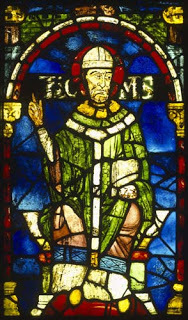
1164 Thomas Becket, the Archbishop of Canterbury, left Britain because of a quarrel with King Henry II. He fled to Flanders and stayed away from England for 6 years.

1541 Henry VIII was informed that Katherine Howard was involved in two affairs before their marriage.
1570 A tidal wave in the North Sea destroyed the sea walls from Holland to Jutland. More than 1,000 people were killed.

1164 Thomas Becket, the Archbishop of Canterbury, left Britain because of a quarrel with King Henry II. He fled to Flanders and stayed away from England for 6 years.

1541 Henry VIII was informed that Katherine Howard was involved in two affairs before their marriage.

1570 A tidal wave in the North Sea destroyed the sea walls from Holland to Jutland. More than 1,000 people were killed.
Published on November 02, 2015 02:00

